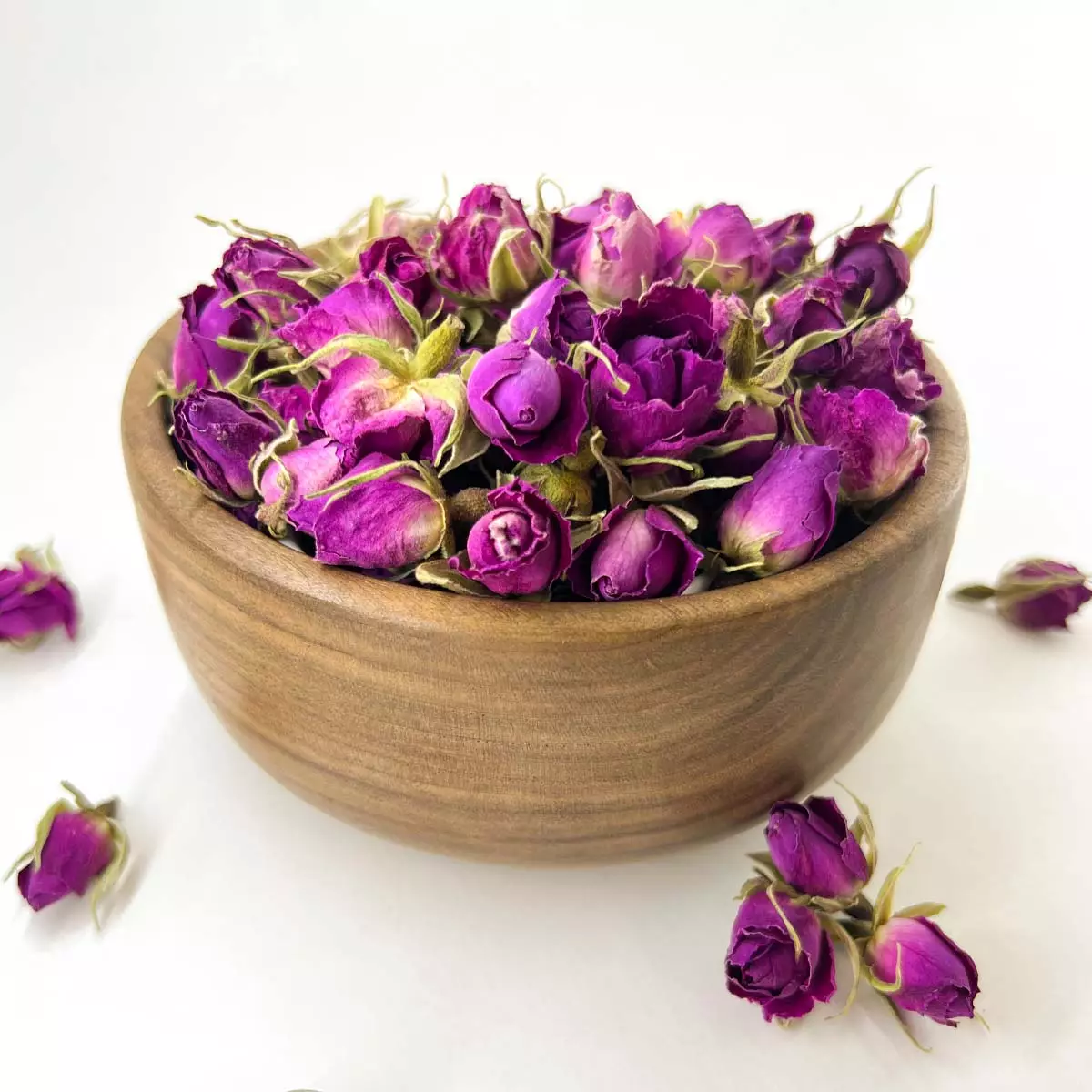Why Choose Us As Your Rose Buds Supplier?
- We are the manufacturer and supplier of Rose Buds.
- We observe strict quality control (QC) measures for all our production processes.
- We perform an annual, knowledge-based analysis of crops and farms, giving us access to the best raw materials.
- We operate in hygienic processing environments with safety food certifications.
- We have highly skilled workers in factories and a team of experts on the business side who help to customize products based on market needs.
- We offer flexible packaging to suit various market demands.
- We offer premium quality at a reasonable price.
- We provide convenient access to our products through our offices/representatives.
- We provide a sustainable supply during the year.
- We provide third-party test reports when needed.
- We are proud of our happy clients across the globe.
Rose buds Specifications
The detailed specifications of the Rose buds are shown in the table below:
Rose buds Use
Roses have traditionally been associated with making tea. But there are many other uses for rose buds.
Some common applications of Rose buds include:
- As a natural flavor for drinks and beverages (in bars or at home), such as lemonades, juices, and tea
- To enhance salads, jams, homemade drinks, desserts, cakes, bread, syrup, and cookies
- To make candied rose petals, rose butter, and rose sugar
- To make rose creams, which is a rose-flavored fondant covered in chocolate and topped with crystallized rose petals
- To make a water bath to apply to your skin, facial toners, soaps, bath bombs, shampoo, lotions, creams, etc.
- To decorate your house, such as in a potpourri
- To change the vibe of confined spaces such as your room or office
- To create a beautiful gift
Rose buds Health Benefits
Roses are famous for having a fragrant, pleasant smell. But the petals of rose flowers possess other features that make them a special food ingredient. Also, Rose Tea could be a great replacement for some of the more common hot caffeinated drinks.
- Rose petals are a good source of vitamins C, A, and E and iron and calcium.
- They also contain antioxidants.
- Rose sepals are also rich in vitamin K, A, and B.
- They are known for their soothing effect when added to teas and drinks.
History of Roses
Roses have been known for their attractive and fragrant blooms for many years now. According to fossil evidence, this flower is around 35 million years old. Despite being with us for god knows how long and boasting a colorful history, their cultivation in gardens began about 5,000 years ago in ancient China.
During the Roman period, roses were grown in the Middle East to make perfumes, medication purposes, and as confetti at weddings. During “the war of the roses” in the fifteenth century, a battle between crusading factions who tried to gain control of England, the white rose used as the symbol of York, and the red rose indicated Lancaster.
Roses have always been a favorite subject in arts, appearing in illustrations, portraits, and architectural elements. Nowadays, roses are grown almost everywhere, and their application has spread to food and recipes as well.
Many edible rose varieties have been developed over the years, and various recipes are being developed on a daily basis to integrate rose parts into daily diets. As our knowledge of this fascinating plant grows, so are the uses.
Our rose buds are in whole pieces and dried with careful handling. They contain rose petals, rose sepals, and rosehip. Small, unopened, or undeveloped flowers are taken directly from rose plants grown in the field. Skilled workers manage the dehydrating process to eliminate injury to the buds.






BoNe –
Just make sure you rinse the roses and allow them to soak for a minute in lukewarm or cool water.
Tiffany –
A great gift for Valentine’s Day.
Cho –
Extremely clean and well prepared